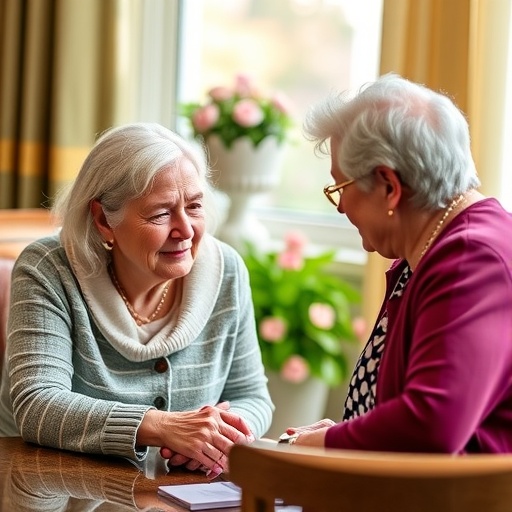Brain-based classification of negative social bias in adolescents with nonsuicidal self-injury
Adolescent girls who self-injure feel that they receive more negative feedback than they actually receive, and are more sensitive to “thumbs down” responses, compared to other adolescent girls. These are the findings presented by Irene Perini, researcher at Center for Social and Affective Neuroscience (CSAN) at Linköping University, in a recently published article.
Irene Perini has previously examined what happens in the brains of adolescents when they use social media. She used images taken in a magnetic resonance camera to show that it is an expectation of social judgement that initiates processes in the brain. Those areas of the brain that direct our attention towards what is most relevant for us, which form what is known as the salience network, are particularly strongly affected.
“When we post a picture or a comment on social media, the brain registers an expectation of being judged, receiving affirmation, as something important”, Irene Perini explains.
She has continued to examine the effect more deeply and compared a group of 27 healthy girls with 27 girls with nonsuicidal self-injury (NSSI), which refers to the intentional destruction of one´s own body tissue without suicidal intent and for purposes not socially sanctioned. The project is a collaboration with other scientists, including Maria Zetterqvist, clinical psychologist and CSAN researcher, who works with adolescents with NSSI.
“We know that healthy social interactions are particularly important for teenagers, and we also know that social stress and self-injuring are linked in young people. Interpersonal stress, perceived criticism, and perceived social rejection are common triggers of NSSI”, says Irene Perini.
In the test, she used an online game that simulates the interaction between young people on social media. They were asked to decide whether they liked the other players, and they were themselves judged. No matter how they interacted, they received an equal number of thumbs up and thumbs down.
With respect to the activation of the salience network, the experiment found no difference between the two groups. However, they were also asked to reply to several questions about the game. How often did you get a thumbs down? How did it make you feel? Do you like to see your own face (a selfie)?
The replies to these questions differed significantly between the two groups.
The girls who self-injured believed that they had received thumbs down significantly more often than was actually the case, and the negative feedback affected them more strongly than the control group. Their liking for their opponent was lower, and their liking for their own face was also lower than the control group.
“The quality of the interaction was kept artificially neutral, in order to investigate potential bias in interpreting social experiences. Indeed, girls with NSSI manifested a clear negative bias”, says Irene Perini.
Detailed analysis of the images from the magnetic resonance camera (fMRI) has shown that another part of the brain is activated during expectation in the group of girls who self-injure, the part that is usually associated with emotions and reflection.
“But we must be careful when interpreting images from fMRI, particularly until the results can be reproduced in further studies”, she points out. She is at the same time hopeful that the results from the work can help therapists to make advances, now that they know that there is a negative bias – that the patients interpret the situation as being worse than it is.
Should therapists recommend care when using social media?
“It’s probably a good idea if parents and therapists make it clear to adolescents with NSSI that they are more sensitive and that they overinterpret the negative”, Irene Perini replies.
###
Brain-based classification of negative social bias in adolescents with nonsuicidal self-injury: Findings from simulated online social interaction, Irene Perini, Per A Gustafsson, J Paul Hamilton, R Kämpe, Leah M Mayo, Markus Heilig and Maria Zetterqvist, Center for Social and Affective Neuroscience, Linköping University and Region Östergötland, EClinicalMedicine 2019, DOI 10.1016/j.eclinm.2019.06.016
Contact: Irene Perini, [email protected] +46 70 720 82 36
Media Contact
Irene Perini
[email protected]
Related Journal Article
https:/
http://dx.




